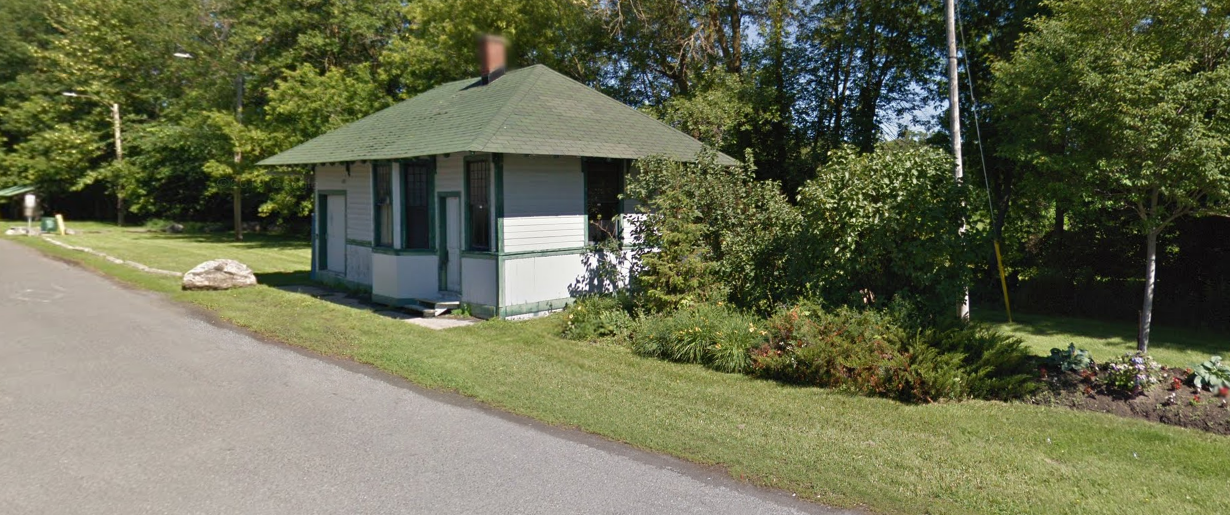Embrun Train Station
More
This historical plaque was added in 2023. It is located at the Train Station at the start of the recreation trail, near 901 Note-Dame Street, Embrun, ON.
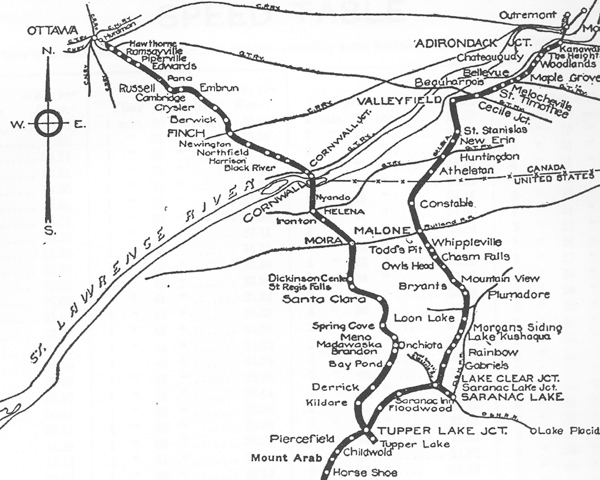 When, in 1897, the Ottawa-New York Company talked about building a railroad linking Ottawa and New York, the residents of Embrun became excited, believing they could make an old dream come true. Despite their relative poverty, the residents voted a bonus of $10,000 to the railway company so that the route would pass close to the village. Construction of the new track required the hiring of many local people. All the work was carried out with the help of carriages, mules and horses. Once completed, the new railroad crossed the parish between St-Onge and Embrun. From Ottawa, it served Hawthorne, Ramsayville, Piperville, Edwards, Pana, Russell, Embrun, Cambridge, Crysler, Berwick, Finch, Newington, Northfield, Harrison, Black River, Cornwall Junction and Cornwall. Embrun became an important stop on the rail line that was soon called the New York Central.
When, in 1897, the Ottawa-New York Company talked about building a railroad linking Ottawa and New York, the residents of Embrun became excited, believing they could make an old dream come true. Despite their relative poverty, the residents voted a bonus of $10,000 to the railway company so that the route would pass close to the village. Construction of the new track required the hiring of many local people. All the work was carried out with the help of carriages, mules and horses. Once completed, the new railroad crossed the parish between St-Onge and Embrun. From Ottawa, it served Hawthorne, Ramsayville, Piperville, Edwards, Pana, Russell, Embrun, Cambridge, Crysler, Berwick, Finch, Newington, Northfield, Harrison, Black River, Cornwall Junction and Cornwall. Embrun became an important stop on the rail line that was soon called the New York Central.
The railroad was inaugurated on September 5, 1898. The first station agent in Embrun was Mr. Alfred Larocque. In the very first year of service, a rail accident near Embrun claimed the lives of the train's two engineers.
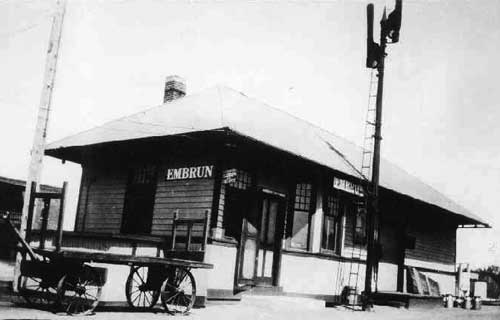 With the arrival of the train, the parish was equipped with an efficient means of transport, a telegraph system and regular mail services. At first, merchants used the train to ship livestock and agricultural produce, but gradually began importing goods. Two large sheds were built for this purpose near the railroad line as early as 1902. During the Second World War, farmers collectively purchased large quantities of certain products, such as western wheat and sugar, which they unloaded themselves from the convoys. This marked the beginning of the cooperative movement in Embrun. Around the same time, Noël Desrosiers replaced Émile Blais as station agent.
With the arrival of the train, the parish was equipped with an efficient means of transport, a telegraph system and regular mail services. At first, merchants used the train to ship livestock and agricultural produce, but gradually began importing goods. Two large sheds were built for this purpose near the railroad line as early as 1902. During the Second World War, farmers collectively purchased large quantities of certain products, such as western wheat and sugar, which they unloaded themselves from the convoys. This marked the beginning of the cooperative movement in Embrun. Around the same time, Noël Desrosiers replaced Émile Blais as station agent.
While the train made a major contribution to the parish's economic progress, it was just as important to the social life. People could now receive or visit relatives and friends in more distant towns, or simply take a short train ride.
For many years, the railroad was the faithful witness to the village's evolution. Suffice to say that it ushered in an era of prosperity for Embrun; however, it was this prosperity that was to be the railroad's undoing. By the 1920s, the company was already experiencing difficulties due to the early rotting of the sleepers. In 1922, workers replaced the cedar wood with white spruce, but to no avail. These costs proved exorbitant for the New York Central. The derailment of 1927 also added to an already difficult situation.
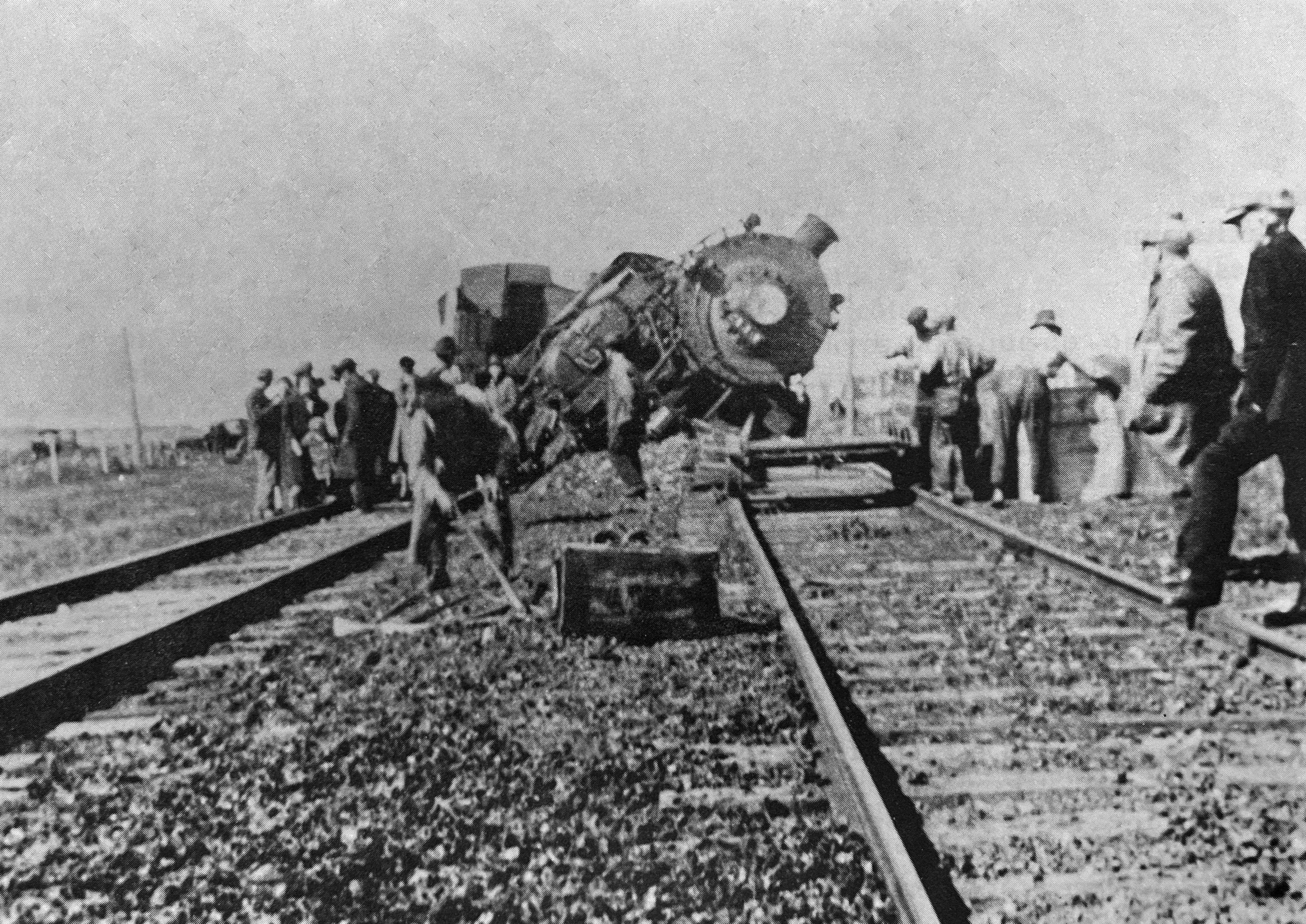
The 1940s brought a bleak future. Since 1898, the train had provided a regular link between Embrun and the major centre, but the increasing use of the automobile, the introduction of bus service to Ottawa and, above all, the use of trucks to transport goods, provided such stiff competition for the railroad that, in 1939, the company was forced to withdraw two trains from its schedule. In 1951, it abandoned service for the first time from August 16 to September 22. In the summer of 1952, trains were again stopped from April to Fall. Mail was then transported by truck.
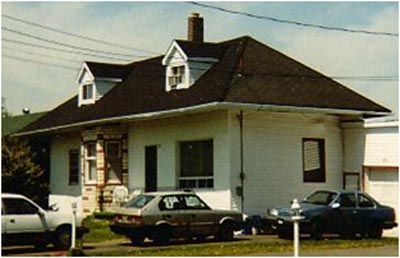 Two years later, the company suspended passenger service. Finally, on February 14, 1957, the last New York Central train left Ottawa at 3:30 pm. This freight convoy, pulled by a 1,600-horsepower locomotive, stopped at every small station, now disused, where a melancholy crowd had come to bid it farewell. At each stop, the stationmaster handed over the official papers to the train driver. It was dark when the train finally reached Cornwall, where it was greeted by curious onlookers and journalists who had come to immortalize the end of an era. The next day, the company surrendered its charter and permanently ceased all operations. Later that year, Canadian National, which had acquired the New York Central, removed the rails and demolished the bridges. The station, the last vestige of New York Central's existence in Embrun, was moved in 1961 to 24 Bourassa Street, to be converted into a residence, where it remains to this day, now recently renovated.
Two years later, the company suspended passenger service. Finally, on February 14, 1957, the last New York Central train left Ottawa at 3:30 pm. This freight convoy, pulled by a 1,600-horsepower locomotive, stopped at every small station, now disused, where a melancholy crowd had come to bid it farewell. At each stop, the stationmaster handed over the official papers to the train driver. It was dark when the train finally reached Cornwall, where it was greeted by curious onlookers and journalists who had come to immortalize the end of an era. The next day, the company surrendered its charter and permanently ceased all operations. Later that year, Canadian National, which had acquired the New York Central, removed the rails and demolished the bridges. The station, the last vestige of New York Central's existence in Embrun, was moved in 1961 to 24 Bourassa Street, to be converted into a residence, where it remains to this day, now recently renovated.
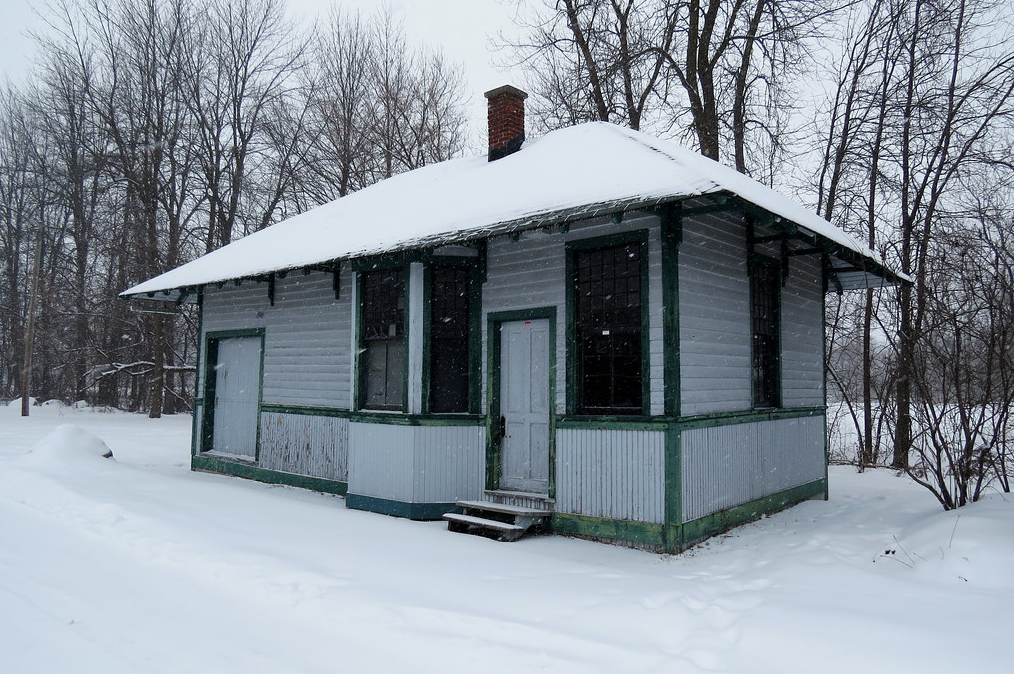 The old Berwick station, built in 1898, was subsequently moved to Embrun, where it was restored and installed along the old railroad line. It was converted into a railway museum for some time, bearing witness to an era that most of our current residents have never experienced. In 2022, with the dedicated work of the Embrun Train Station Committee, the exterior of the train station received some much-needed renovation, including a fresh coat of paint, in keeping with its historical look of two tones of green.
The old Berwick station, built in 1898, was subsequently moved to Embrun, where it was restored and installed along the old railroad line. It was converted into a railway museum for some time, bearing witness to an era that most of our current residents have never experienced. In 2022, with the dedicated work of the Embrun Train Station Committee, the exterior of the train station received some much-needed renovation, including a fresh coat of paint, in keeping with its historical look of two tones of green.
Reference documents:
Life before the train station
At the end of the 19th century, the arrival of the Prescott-Russell railroad changed the social and economic life of the small parishes along its route. The population of Embrun, completely isolated from the major centers, soon realized the importance of having a new communication route close to the village, which appeared to be a sign of prosperity.The opening of the Embrun Train Station
 When, in 1897, the Ottawa-New York Company talked about building a railroad linking Ottawa and New York, the residents of Embrun became excited, believing they could make an old dream come true. Despite their relative poverty, the residents voted a bonus of $10,000 to the railway company so that the route would pass close to the village. Construction of the new track required the hiring of many local people. All the work was carried out with the help of carriages, mules and horses. Once completed, the new railroad crossed the parish between St-Onge and Embrun. From Ottawa, it served Hawthorne, Ramsayville, Piperville, Edwards, Pana, Russell, Embrun, Cambridge, Crysler, Berwick, Finch, Newington, Northfield, Harrison, Black River, Cornwall Junction and Cornwall. Embrun became an important stop on the rail line that was soon called the New York Central.
When, in 1897, the Ottawa-New York Company talked about building a railroad linking Ottawa and New York, the residents of Embrun became excited, believing they could make an old dream come true. Despite their relative poverty, the residents voted a bonus of $10,000 to the railway company so that the route would pass close to the village. Construction of the new track required the hiring of many local people. All the work was carried out with the help of carriages, mules and horses. Once completed, the new railroad crossed the parish between St-Onge and Embrun. From Ottawa, it served Hawthorne, Ramsayville, Piperville, Edwards, Pana, Russell, Embrun, Cambridge, Crysler, Berwick, Finch, Newington, Northfield, Harrison, Black River, Cornwall Junction and Cornwall. Embrun became an important stop on the rail line that was soon called the New York Central.The railroad was inaugurated on September 5, 1898. The first station agent in Embrun was Mr. Alfred Larocque. In the very first year of service, a rail accident near Embrun claimed the lives of the train's two engineers.
A thriving community
 With the arrival of the train, the parish was equipped with an efficient means of transport, a telegraph system and regular mail services. At first, merchants used the train to ship livestock and agricultural produce, but gradually began importing goods. Two large sheds were built for this purpose near the railroad line as early as 1902. During the Second World War, farmers collectively purchased large quantities of certain products, such as western wheat and sugar, which they unloaded themselves from the convoys. This marked the beginning of the cooperative movement in Embrun. Around the same time, Noël Desrosiers replaced Émile Blais as station agent.
With the arrival of the train, the parish was equipped with an efficient means of transport, a telegraph system and regular mail services. At first, merchants used the train to ship livestock and agricultural produce, but gradually began importing goods. Two large sheds were built for this purpose near the railroad line as early as 1902. During the Second World War, farmers collectively purchased large quantities of certain products, such as western wheat and sugar, which they unloaded themselves from the convoys. This marked the beginning of the cooperative movement in Embrun. Around the same time, Noël Desrosiers replaced Émile Blais as station agent.While the train made a major contribution to the parish's economic progress, it was just as important to the social life. People could now receive or visit relatives and friends in more distant towns, or simply take a short train ride.
For many years, the railroad was the faithful witness to the village's evolution. Suffice to say that it ushered in an era of prosperity for Embrun; however, it was this prosperity that was to be the railroad's undoing. By the 1920s, the company was already experiencing difficulties due to the early rotting of the sleepers. In 1922, workers replaced the cedar wood with white spruce, but to no avail. These costs proved exorbitant for the New York Central. The derailment of 1927 also added to an already difficult situation.
- New York Central train derailment near Embrun station, 1927.
Source: Mme Claire Désormeaux
Changing times
The 1940s brought a bleak future. Since 1898, the train had provided a regular link between Embrun and the major centre, but the increasing use of the automobile, the introduction of bus service to Ottawa and, above all, the use of trucks to transport goods, provided such stiff competition for the railroad that, in 1939, the company was forced to withdraw two trains from its schedule. In 1951, it abandoned service for the first time from August 16 to September 22. In the summer of 1952, trains were again stopped from April to Fall. Mail was then transported by truck. Two years later, the company suspended passenger service. Finally, on February 14, 1957, the last New York Central train left Ottawa at 3:30 pm. This freight convoy, pulled by a 1,600-horsepower locomotive, stopped at every small station, now disused, where a melancholy crowd had come to bid it farewell. At each stop, the stationmaster handed over the official papers to the train driver. It was dark when the train finally reached Cornwall, where it was greeted by curious onlookers and journalists who had come to immortalize the end of an era. The next day, the company surrendered its charter and permanently ceased all operations. Later that year, Canadian National, which had acquired the New York Central, removed the rails and demolished the bridges. The station, the last vestige of New York Central's existence in Embrun, was moved in 1961 to 24 Bourassa Street, to be converted into a residence, where it remains to this day, now recently renovated.
Two years later, the company suspended passenger service. Finally, on February 14, 1957, the last New York Central train left Ottawa at 3:30 pm. This freight convoy, pulled by a 1,600-horsepower locomotive, stopped at every small station, now disused, where a melancholy crowd had come to bid it farewell. At each stop, the stationmaster handed over the official papers to the train driver. It was dark when the train finally reached Cornwall, where it was greeted by curious onlookers and journalists who had come to immortalize the end of an era. The next day, the company surrendered its charter and permanently ceased all operations. Later that year, Canadian National, which had acquired the New York Central, removed the rails and demolished the bridges. The station, the last vestige of New York Central's existence in Embrun, was moved in 1961 to 24 Bourassa Street, to be converted into a residence, where it remains to this day, now recently renovated. The old Berwick station, built in 1898, was subsequently moved to Embrun, where it was restored and installed along the old railroad line. It was converted into a railway museum for some time, bearing witness to an era that most of our current residents have never experienced. In 2022, with the dedicated work of the Embrun Train Station Committee, the exterior of the train station received some much-needed renovation, including a fresh coat of paint, in keeping with its historical look of two tones of green.
The old Berwick station, built in 1898, was subsequently moved to Embrun, where it was restored and installed along the old railroad line. It was converted into a railway museum for some time, bearing witness to an era that most of our current residents have never experienced. In 2022, with the dedicated work of the Embrun Train Station Committee, the exterior of the train station received some much-needed renovation, including a fresh coat of paint, in keeping with its historical look of two tones of green.Reference documents:
- Histoires d’Embrun – Francine Bourgie, Jean-Pierre Proulx, 1981
- Embrun au jour le jour – Jean-Pierre Proulx, 2006

